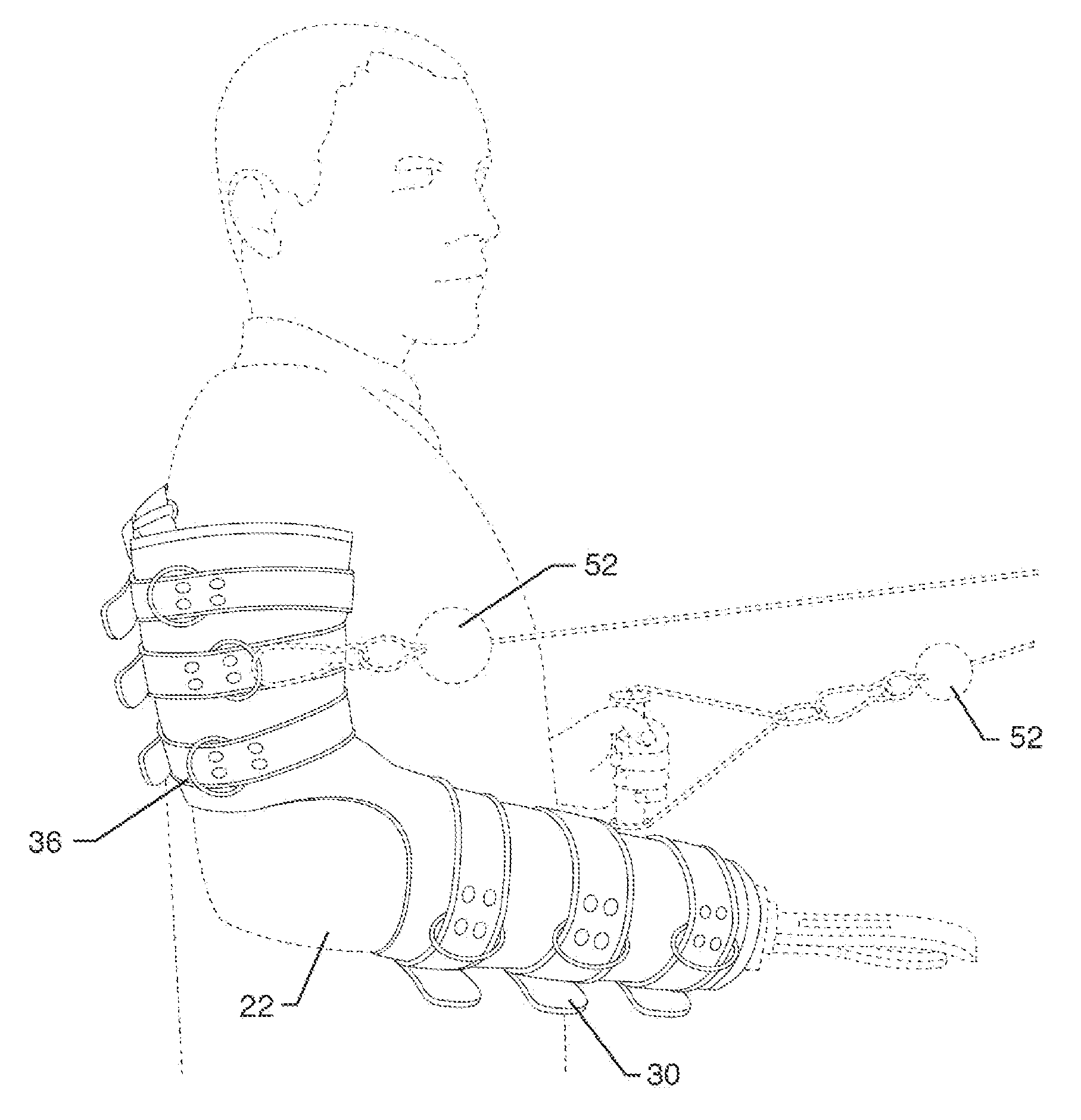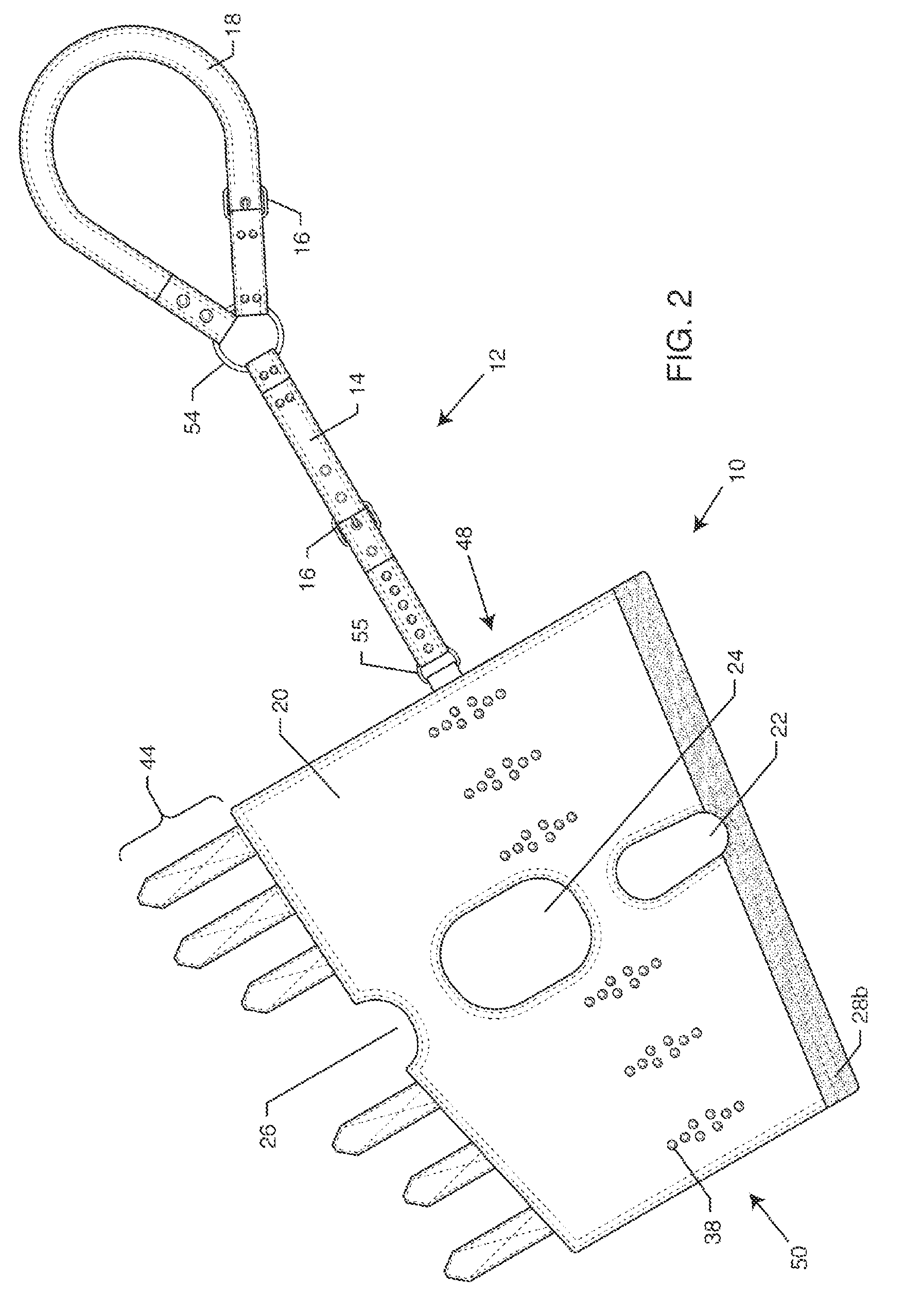Exercise device for use with a prosthesis
a technology for exercise devices and prostheses, applied in the field of exercise devices for use with prostheses, can solve the problems of inability to perform a variety of upper-body exercises, unable to perform exercises that involve pulling towards me (i.e. rowing) or pulling down (i.e. lat pulldown), and achieve the effect of not impairing the flexibility of the elbow join
- Summary
- Abstract
- Description
- Claims
- Application Information
AI Technical Summary
Benefits of technology
Problems solved by technology
Method used
Image
Examples
Embodiment Construction
[0016]The following description is provided to enable any person skilled in the art to make and use the invention and sets forth the best modes contemplated by the inventor of carrying out his invention. Various modifications, however, will remain readily apparent to those skilled in the art, since the general principles of the present invention have been defined herein specifically to provide a wearable device to adapt prosthetic limbs to weight lifting and similar physical exercise.
[0017]Development of the device. As I have already explained, I was frustrated by the inability of my prosthesis to accommodate certain exercises, particularly those that included a pulling movement. Eventually I realized that many exercises that I was currently unable to perform could be performed if I could create a strong, stable device linked in some way to my body and by means of which I could attach cables from a weight machine to my arm. Upon making this realization, I quickly realized that an ar...
PUM
 Login to View More
Login to View More Abstract
Description
Claims
Application Information
 Login to View More
Login to View More - R&D
- Intellectual Property
- Life Sciences
- Materials
- Tech Scout
- Unparalleled Data Quality
- Higher Quality Content
- 60% Fewer Hallucinations
Browse by: Latest US Patents, China's latest patents, Technical Efficacy Thesaurus, Application Domain, Technology Topic, Popular Technical Reports.
© 2025 PatSnap. All rights reserved.Legal|Privacy policy|Modern Slavery Act Transparency Statement|Sitemap|About US| Contact US: help@patsnap.com



